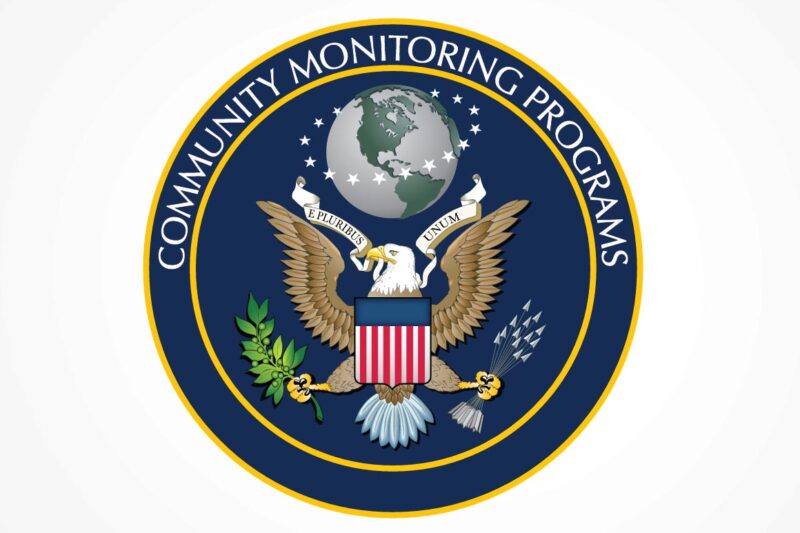
Imagine you’re a high school principal. An FBI document lands on your desk. It’s called “Preventing Violent Extremism in Schools,” and it’s alarming. According to the paper, “youth are embracing many forms of violent extremism” and “are actively engaged in extremist activities.” Your students, the paper warns, are “ideal targets” for recruitment by violent extremists. What are you going to do?
That’s a question high school principals across the country will have to confront when they read this document, released as part of the government’s countering violent extremism (CVE) programs, a sweeping set of initiatives the government has identified as a top national security priority. A core component of CVE programs asks teachers, social workers, and school administrators to monitor and report to law enforcement on children in their care. In the document, the FBI advises, “high schools must remain vigilant in educating their students about catalysts that drive violent extremism and the potential consequences of embracing extremist beliefs.” The document purports to “serve as a guide to educate school personnel about at-risk behaviors and activities that assist students with reducing social and psychological commitment to violence as a method of resolving a grievance.”
On its surface, this paper indicates some shifts in tone and emphasis compared to the few other CVE-related documents the government has made public. For example, while other CVE documents mostly lack any evidence-based foundation, this document incorporates social science research (although it’s unclear how sound that research is). Other CVE documents have mentioned “off-ramps” or alternatives to criminal prosecution for people suspected of planning to commit political violence, but have failed to explore those alternatives. This paper puts forth a theory for what that intervention might look like (although it’s not clear that the FBI is yet implementing alternatives to its heavy-handed, often-criticized emphasis on prosecution).
At bottom, though, this document fails to substantively address any of the criticisms of CVE programs that have been raised by the ACLU and other advocacy and communitygroups, including concerns about the programs’ impact on Americans’ freedoms of speech, belief, and association — and particularly those of religious and racial minorities.
For example, the FBI says it doesn’t want to limit students’ freedom of speech. Yet the document makes clear that the Bureau essentially expects teachers and administrators to monitor and report on students’ thoughts. It encourages school officials to identify students who “engage in communications indicating support for extremist ideologies” or who are “curious about the subject matter” of extremism. But in the United States, holding beliefs and researching ideas, even extreme ones, are not crimes, and schools should be environments where inquiry — including about controversial topics — thrives.
The FBI’s request that school officials spy and report on students’ ideas and beliefs risks stifling students’ curiosity and free expression, and corrupts the trust that should exist between teachers and students. And we’ve seen examples of just how damaging this sort of suspicion and censorship can be. Similar programs encouraging schools to closely monitor students in the United Kingdom have had harmful consequences. In one case, a university student studying counterterrorism was investigated for reading a book on terrorism. Inanother, a 14-year-old boy was interrogated after simply discussing “eco-terrorists” in school, a topic he had learned at a debate society meeting. That sort of targeting of students for their intellectual curiosity seems to be just what the FBI is inviting in American schools.
The FBI also says that its CVE programs are aimed at all forms of violent extremism, and not at American Muslims in particular. But that’s somewhat disingenuous, and in any event doesn’t address the fundamental problems with law enforcement monitoring students based solely on any belief. Although the FBI document mentions domestic violent extremists and hate crimes, the vast majority of the images and examples used throughout the document, and its focus on “diaspora” and “immigrant” populations, unmask its true focus — American Muslim teenagers. As we’ve written before, CVE programs’ focus on Muslim communities stigmatizes them as inherently suspect and more prone to political violence. Not only is this notion false, it goes against the principles on which this country was founded.
More broadly, in its ongoing attempts to repackage CVE as a program that doesn’t focus just on American Muslims, the government has expanded its scope to such a degree that it has become a vehicle with which to target all extreme beliefs. For example, in this document, the FBI says (without providing any evidence) that students are susceptible to adopting a range of extremist ideologies. These ideologies include “white supremacists, animal rights and eco-terrorists, and anti-government or radical separatist groups.” The FBI has a long history of wrongful investigations of people and groups with beliefs that challenge societal orthodoxies. The fact is, the First Amendment protects all viewpoints, no matter how extreme or what they are, and speech, as long as the speech is not a true threat or incitement to imminent violence. No one should be spied on for their beliefs, without suspicion of actual wrongdoing. Slapping a “violent extremism” label onto a wider range of views simply perpetuates and expands one of the fundamental problems with CVE programs.
The FBI says that it wants to empower school officials and community groups to intervene with students before involving law enforcement. But the paper simultaneously tells principals that American high school students’ purported mobilization to political violence as an alarming problem, stating, in no uncertain terms, that high schools are hotbeds for budding terrorists. (Again, it provides no evidence for that proposition.) The document warns school officials that the time from “flash to bang” — between a student embracing an extremist ideology and resorting to violence — can be very short, and the consequences for failing to act in time can be “abuse, injury, or death.” Imagine how a principal might respond to this kind of alarm.
The document calls for schools to create “threat assessment teams” and “enhance domain awareness” — FBI-speak for intelligence operations. Invoking short timelines and calling for the use of surveillance tactics and law enforcement procedures to thwart future hypothetical potential threats is nothing short of fear mongering. And it will almost assuredly ratchet up the pressure on school officials to go to law enforcement before seeking out alternatives. Our schools are not, and should not become, mini-FBI field offices.
The FBI is suggesting that principals must choose between keeping their schools secure and respecting and upholding students’ rights to free expression and equal protection. But that’s a false choice: Our kids are safer, and our communities are stronger, when we work to protect — not erode — our fundamental values and freedoms.
This post originally appeared at Just Security.



